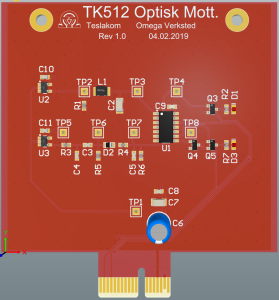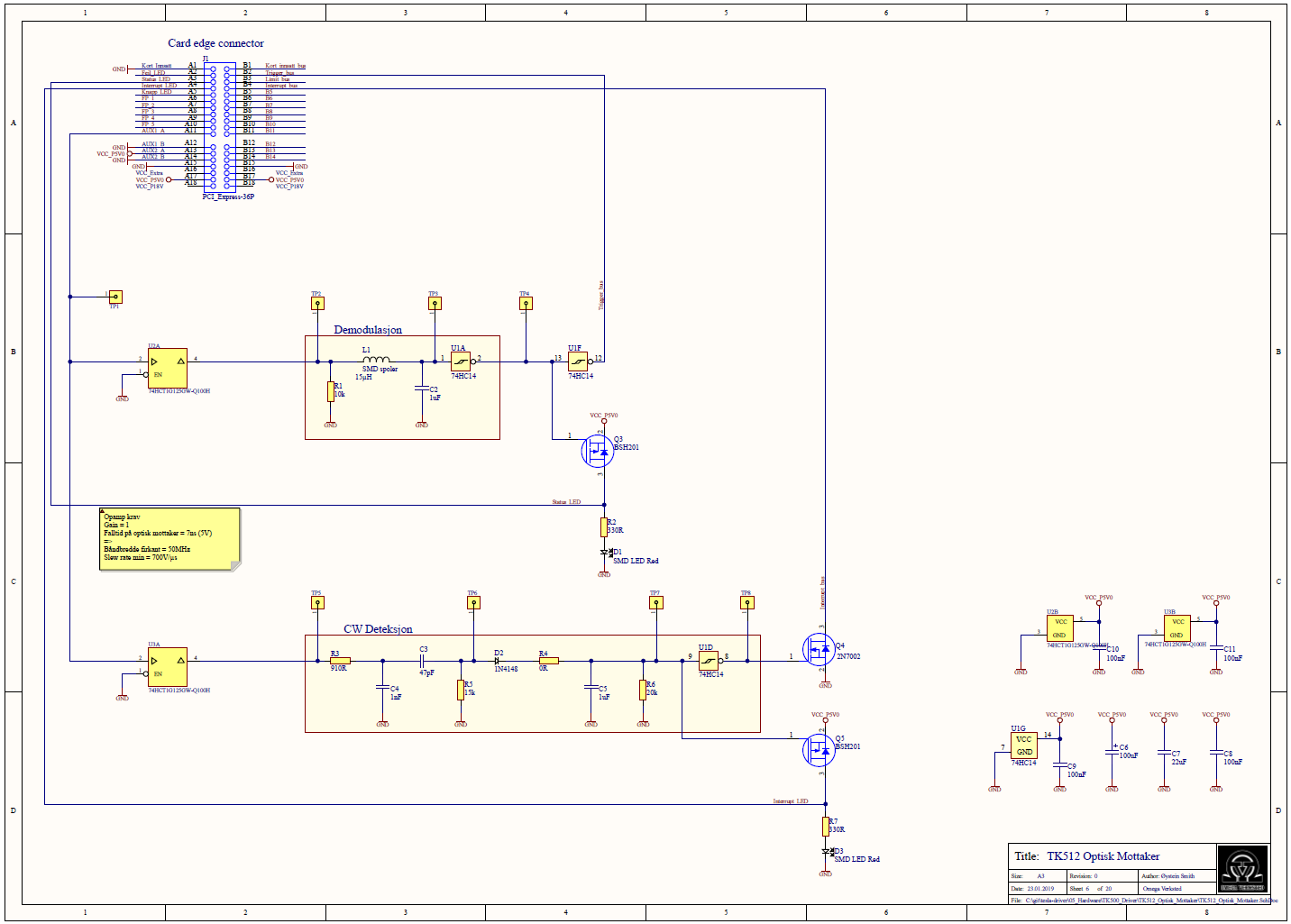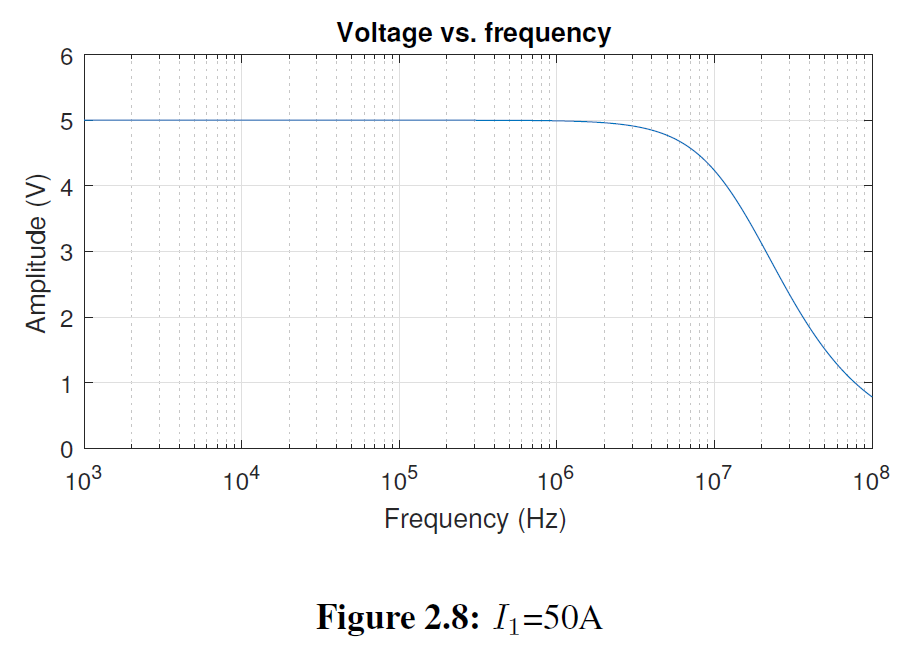| Table of Contents |
|---|
Teori
Bakgrunn
TBD
...
(2.8)
The cut off frequency fc decides how much noise is allowed through to the comparator and thus how often the spark is shut down early unintentionally due to noise. The spark being shut down unintentionally generates noise on the acoustic signal. The rectified signal is fed into a comparator, the other input of the comparator is connected to a variable voltage controlled by a potentiometer. R3 is to set the highest level the variable voltage can be set to. R4 is to pull the input of the comparator low in the case that the potentiometer is disconnected. The relation between the (peak) current in the primary resonance circuit and the (peak) voltage on the input of the comparator is given by eq. (2.9).
2.3. Power Limiter 15103 104 105 106 107 108
Frequency (Hz)
(2.9)
Where n1/n2 is the winding ratio of the feedback transformer, IX6 is the current running in the primary resonance circuit, f is the fundamental frequency of IX6 (half the frequency of the signal on the input of the comparator because of the full bridge rectifier). Given n1 = 1, n2 = 100, R2 = 10 , C3 = 1nF, f = 110kHz, we get UX90 IX6 = 0; 1 Volts per Ampere.
If the voltage of X90 is higher than the voltage set by the potentiometer X10 the output of the comparator goes low and resets the latch. The data input of the latch is connected to VCC, on the next positive flank of the interrupt signal X2 the data will be clocked to the output and the output will go high. R5 is to give the possibility to tune the resistance of R2 by removing R2 from the PCB and mounting R5 instead, R5 then replaces R2 in the calculations above. R2 decides the range of current that can be sensed and compared to the preset level. This is critical to the maximum amplitude attainable on the output and the range of amplitudes attainable. And thus affects the volume and dynamic range of the acoustic signal. The output of the latch X3 is connected to the interrupter, as explained in section 2.2. A low signal stops the output of the interrupter. A high signal allows the interrupt signal X2 to control the output.
| View file | ||||
|---|---|---|---|---|
|
Versjoner
V0.0 (2009)
Changelog
- Laget av Dewald De Bruyn
Errata
- Skjematikk eksisterer ikkeVirkemåte stemmer ikke overens med skjematikk
V0.1 (2014)
Changelog
- Delvis reverse engineret Kokt fra 2009 , delvis eget designskjema
- Splittet ut på eget kretskort
Errata
- Bærebølgedeteksjon fungerer ikke
- Inverterbufferet dør fra tid til annenFungerer ikke likt som V0.0
V1.0
Changelog
- BakplanifisertFlyttet optisk plugg til eget kort
- Lagt til buffere før filterne
- Lagt til testpunkter
Errata
- potmeter som last til feedbackspolen for ekstra tuning
Errata
- Kretskortet er for bredt til å passe i kortholderne på bakplanet
- Fungerer ikke likt som V0.0Bærebølgedeteksjon fungerer ikke
Produserte kort
| SN | V | Visuell sjekk | Demodulator | Bærebølgedeteksjon | Interrupt LED | Status LED | Kommentar | ||||||||||||
|---|---|---|---|---|---|---|---|---|---|---|---|---|---|---|---|---|---|---|---|
| 1 | 1.0 | Hacket til delvis bærebølgedeteksjon | 2 | 1.0 | |||||||||||||||






